The Weather’s Finally Found Us, Agrigento and Caltanissetta, Sicily
Dave the motorhome’s wondering where on Earth all the wet stuff came from! He’s fearing his layer of protective dirt may be washed away while parked in the official motorhome sosta in Caltanissetta, central Sicily (N37.48948 E14.04569). Apart from a dodgy spell of weather in north west Spain over a year ago, our wanderings have been mostly dry, often sunny, helped in part by heading to the Sahara each winter. Looking at the weather forecast for Sicily over the next week, the grey clouds and rain have finally tracked us down, about time I guess!
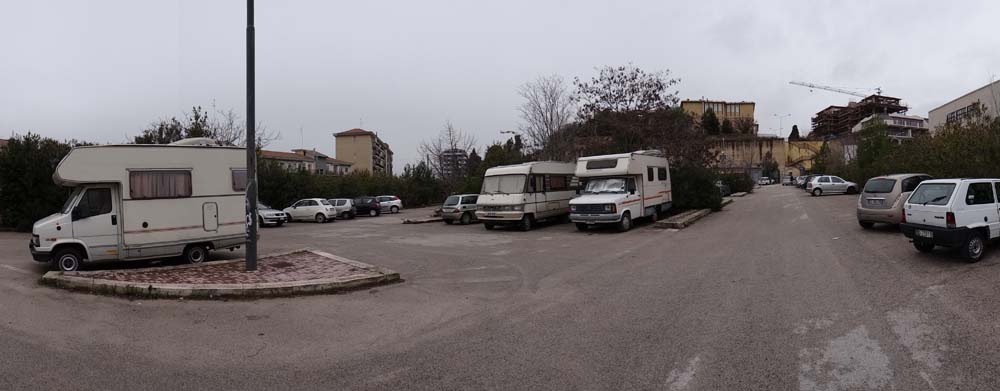
The official sosta at Caltanissetta. It’s not the Hilton, but it’s free and feels safe. The other motorhomes are resting; they appear to be in long term storage as the insurance on one of them (posted in the window of Italian vehicles) ran out 9 months ago.
Our sleeping place last night was on a dead end, with the sea on either side. Spots like this seem to draw Italian cars well into the evening, some staying for half an hour, others just slowly driving in, their headlights raking us, and driving off, giving me the creeps. I’ve watched them, nothing nefarious seems to be happening, I guess they’re just bored or want to be out of the house. Just now as we walked the town groups of men lean against the walls of buildings chatting, despite the fact it’s pouring with rain, perhaps being outside is firmly implanted into the Sicilian psyche? We slept well anyhow.
Sicily’s well known for being impoverished, and the rain and gloom of the past couple of days have fitted well with the downtrodden feel of the place. Today we took the road north, heading for the famous UNESCO-protected Greek templates at Agrigento. As the water spilled from the sky we knew the site would be sodden and chatted about whether we should cough up the entry fee or just cruise on by, after all we’ll be in Greece soon, and have already seen similar templates at Paestum. Travelling for so much time means we’re continually bumping up against the same question: just how many Roman/Greek/Punic ruins do you need to see? How many museums with similar-looking pottery and metalwork? How many war graves? How many beaches, medieval towns, mountain ranges? Today’s decision: let’s go see ’em.
Agrigento is world famous for the Valley of the Temples, a misnomer since said templates are arranged in a line along a ridge overlooking the sea. The place first came into being in 581BC, part of Magna Graecia, the Great Greece of colonies which spread widely across the coastal areas of the southern Italian peninsula and Sicily before the Romans arrived to spoil the fun. The whole town was surrounded by a high wall, using natural cliffs to bolster this defence. Along the southern edge of the enclosure towards the sea, they built a line of magnificent temples.
As the road leads up into the town, these monstrous arrangements of columns slide past through gaps in the groves below. We drove straight through the site without realising it, as in Paestum there’s a road built straight through the middle of the archaeology. Around and back down the hill on the other side we found a second entrance and a pay car park, quickly reversing out and back up the hill to find a free spot! At €10 each entry fee (we opted not to visit the museum which was a few € more), it’s not a cheap place to nip into.
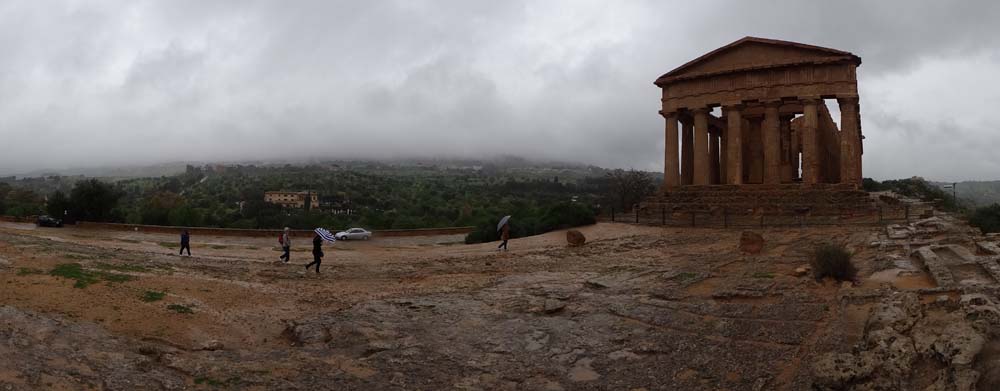
Temple Della Concordia, the best preserved of the temples as it switched allegiance from it’s ancient god, to fulfil the needs of a new one by becoming a Christian basilica in the 6th century AD. The holes in the foreground were Christian burial plots.
If you’re short on cash or time (or it’s lashing it down), I reckon you can get just as good an experience of the place by viewing the temples from the road between the site and the sea, looking up the hill. These things are best viewed from afar, they’re at least 400 years older than Christ and even the best preserved of them have understandably aged somewhat, and been patched up with bricks, mortar and steel over time. One of the lesser examples has been re-built from the jungle of massive cut stones tumbled about on the floor. No-one is entirely sure which temple is dedicated to which deity, but names have been allocated anyway, the Temple of Olympian Zeus for example, the largest Doric (a Greek architectural style) temple ever found. A notice board around this area impartially advises stones from the site were ‘quarried’ and used in building the port near where we’d stayed last night.
A villa standing smack bang in the middle of the entire site was built by an Englishman no less, Sir Alexander Hardcastle, a captain in the army. He’d moved here in 1921 and contributed a fair bit of his own hard-earned to archaeological excavations on the site, and to have eight columns of the Temple of Hercules (maybe) re-erected.

Sir Hardcastle, who ensured that houses built on two of the temples were knocked down, not quite explaining why he’d chosen to pop his villa right in the midst of the site too?
As the rain continued to flow, as coachloads of bored Italian teenagers turned up, we headed off. Was it worth the detour to go see the place? Absolutely, maybe.
Caltanissetta, where we arrived at next, isn’t a tourist destination. It’s pretty rough and run down, at least on the Western outskirts where the sosta’s located. Why here then? Well, we’re on our way back towards Etna to see if we can see any eruptions, or even a faint glow would do. We’ve got some post coming our way addressed to a campsite near there where we stayed for Xmas. Caltanissetta is on the way. The next nearest town is Enna and we’ve been there, and the next biggest tourist draw is the incredible Villa Romana del Casale at Piazza Armerina, and we’ve been there. So here we are.
We braved the rain for a walk into the centre, spied the cathedral, turned around and walked back. In better weather it’s be an OK place to waste a few hours; today’s it’s just a bit grim. We’re not complaining, it’s also free. That is, we’re not complaining unless the mud volcano somewhere around here goes off (good old Wikipedia). A few photos from Caltanissetta:
Cheers! Jay


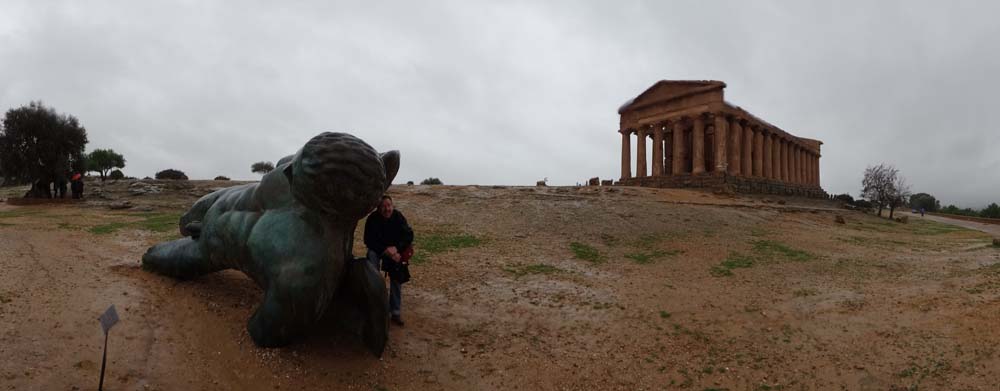
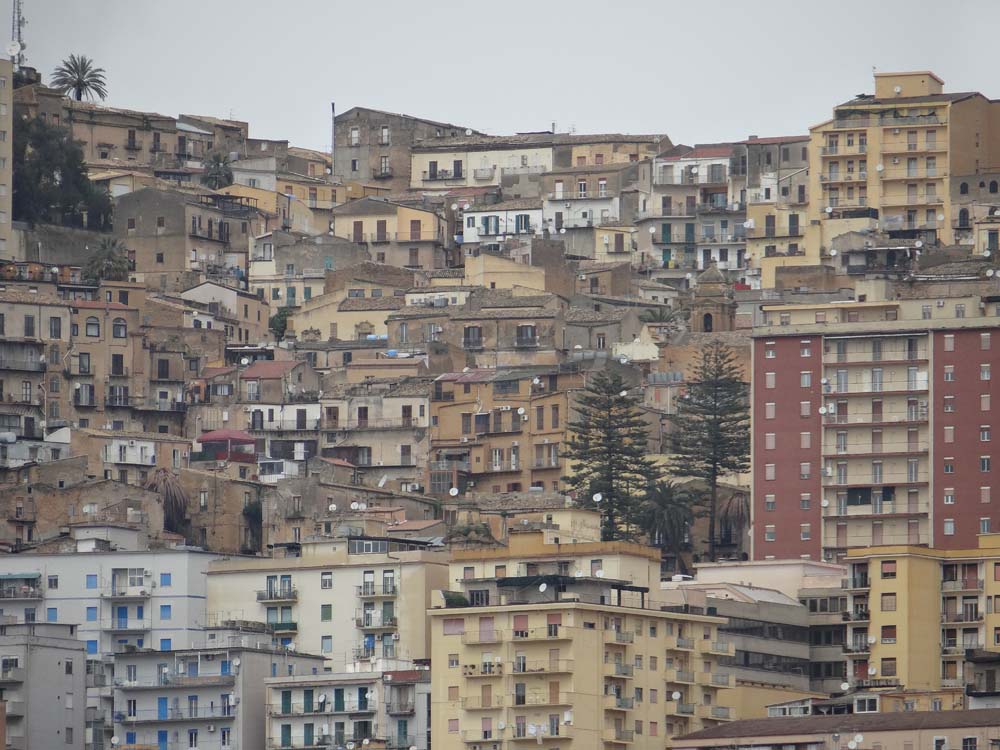
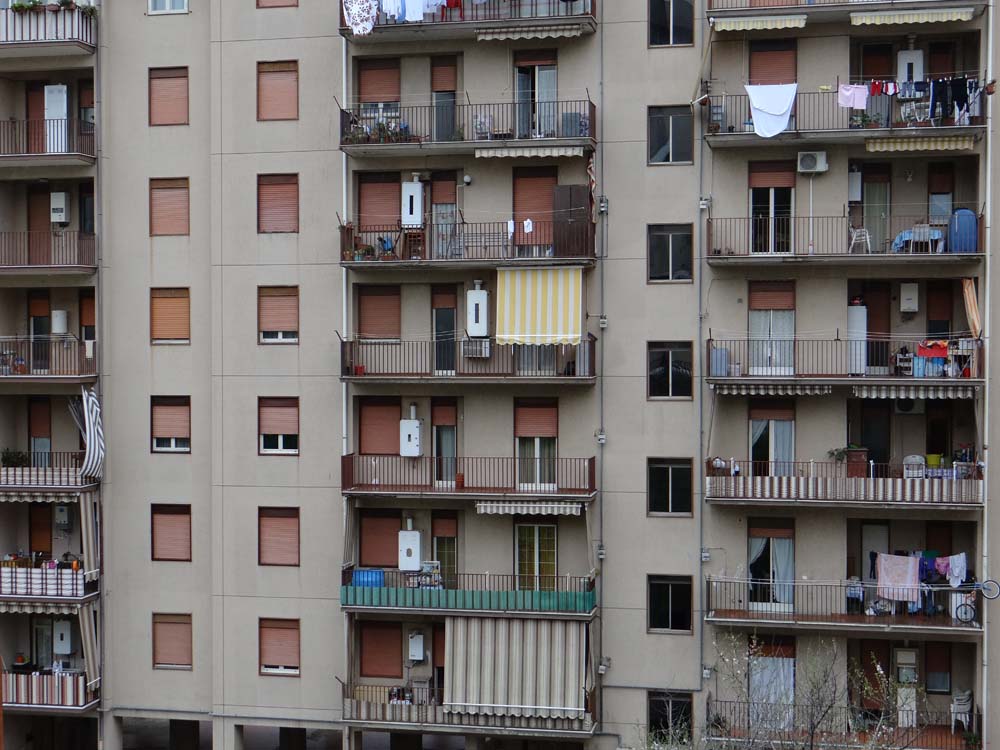
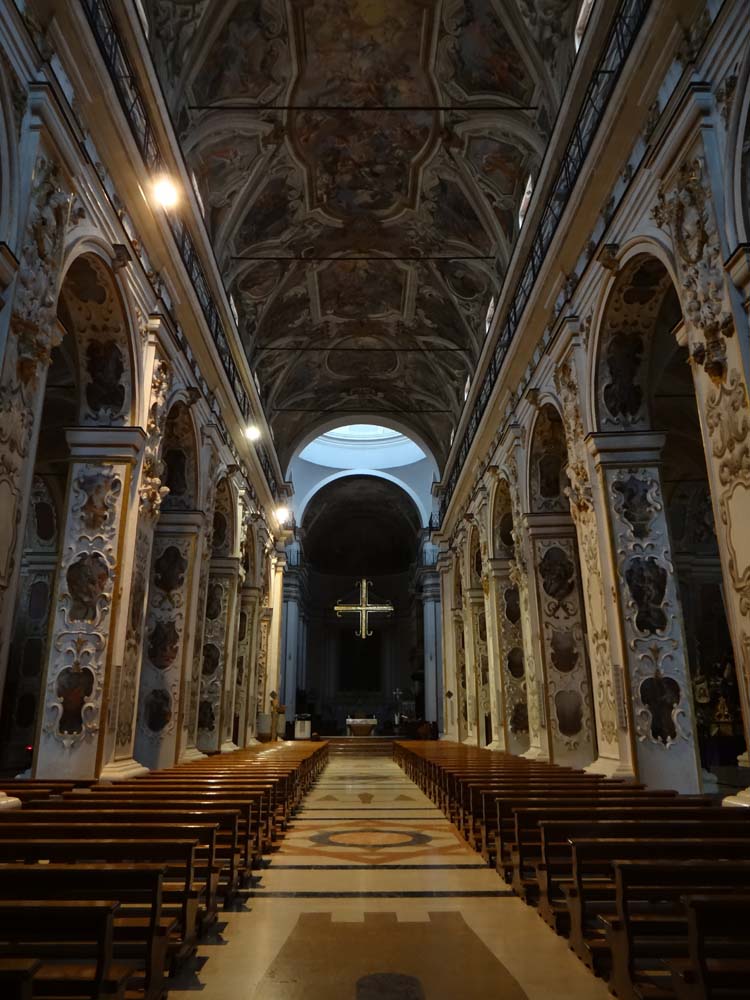
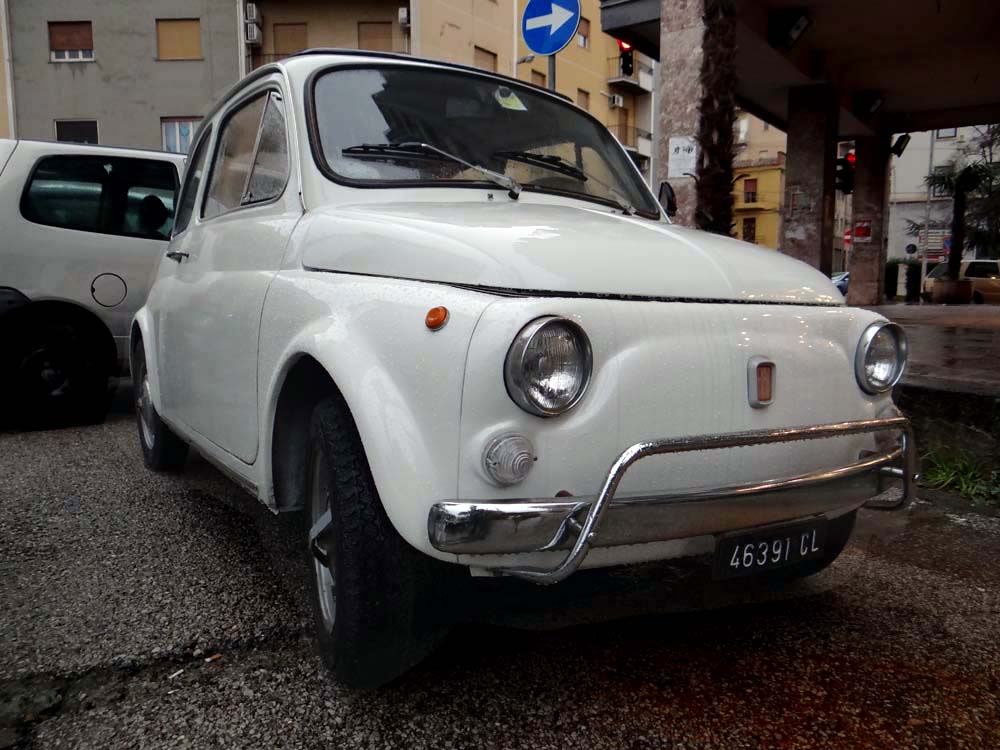
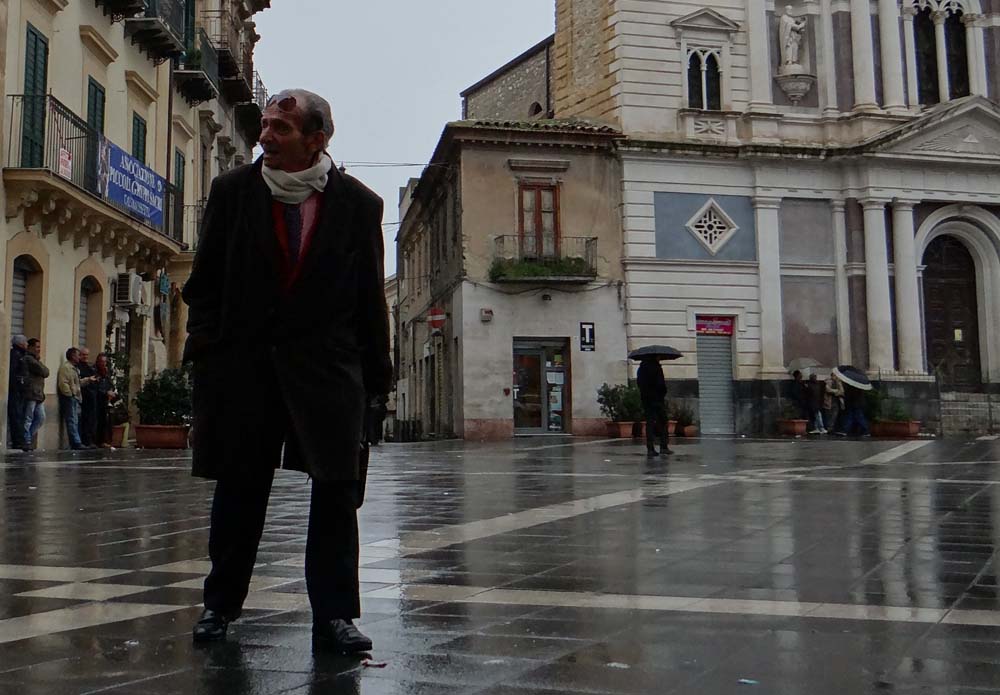

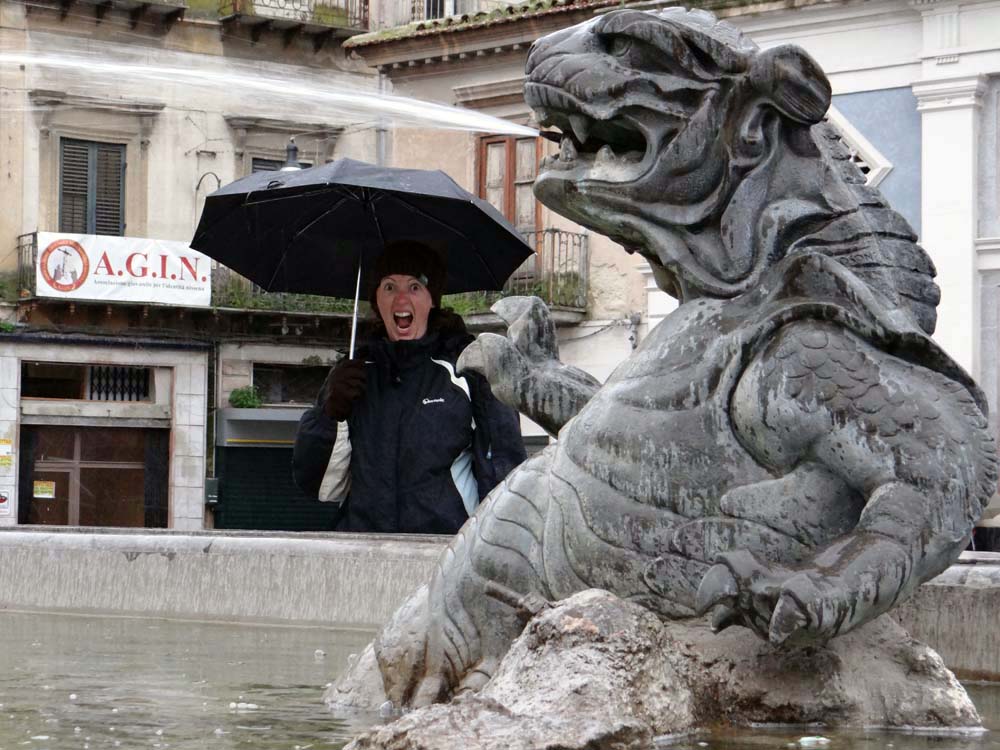
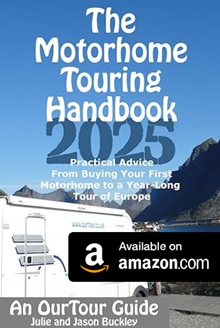


We have the prettier cold snow showers
Know exactly what you mean about being well travelled and deciding just how many ruins etc you can take. We often find the Rough Guide is good in that they will stick their neck out and say this is the best one or don’t bother with this if you are going somewhere else. Always a tough call and we have found that no matter what or how much you do someone down the line will tell you that you have missed the best thing. We don’t care any more just so long as we are enjoying what we do do!